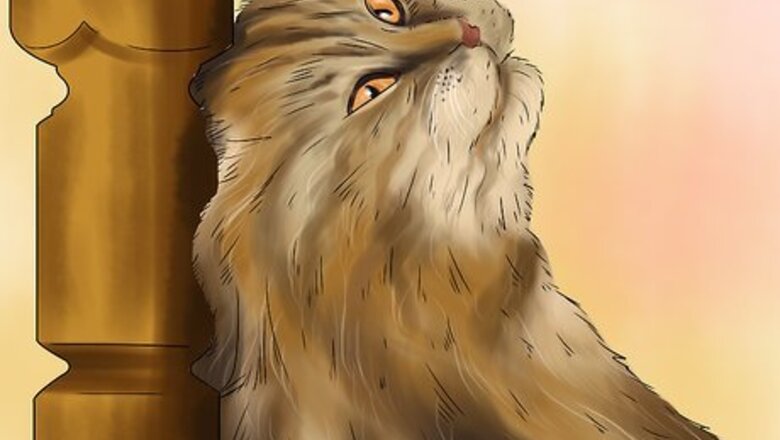
views
Identifying the Symptoms of the Issue

Notice if the cat is shaking or rubbing its head. A cat with ruptured eardrums may shake its head from side to side or tilt it constantly. It may also try to rub its head on furniture or the floor due to the irritation and pain in its ears.
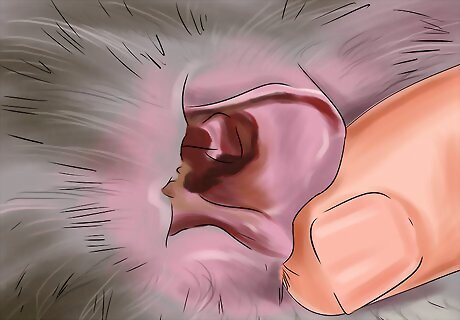
Check the cat’s ears for discharge and redness. Lift the cat’s ear flaps to check for any discharge in its ear. The discharge may have a foul smell. There may also be redness and swelling around its outer ear due to ruptured eardrums. Be very careful when you check the cat’s outer ear area. Do not put any objects or items down the cat’s inner ear when examining it. Only look at the outer ear as best you can.
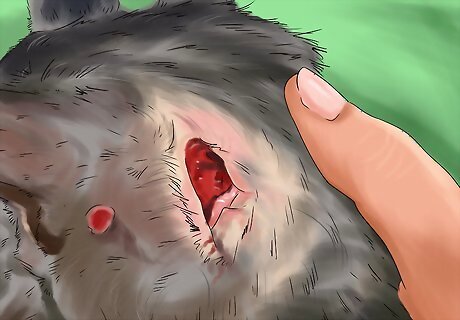
Notice if there are scratches on the cat’s ears, face, or head. Cats with ruptured eardrums may scratch at their ears, face, or head to try to address the irritation in their ears. If the cat has scratches or surface wounds in these areas, it may be because there is an issue with its eardrums.
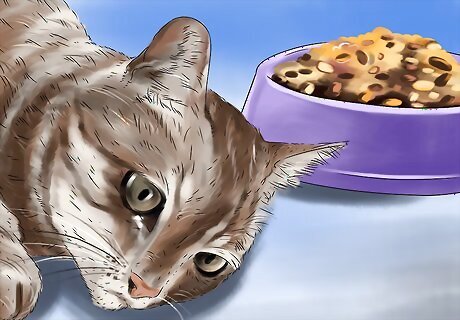
Check if the cat has no appetite. Cats who have medical issues tend to stop eating due to a general feeling of unwellness. Notice if the cat has not eaten its cat food or any treats in 24 hours. If it has no appetite as well as other symptoms, it may have a medical issue.
Getting a Diagnosis
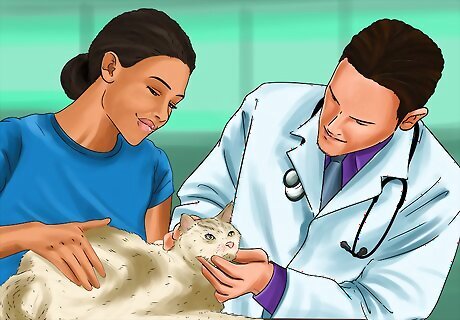
Bring the cat to the vet. If you suspect the cat has a ruptured eardrum, bring it to the vet right away. Ear issues that go undiagnosed and untreated will only get worse. Even if you are not 100% sure the cat has a ruptured eardrum, you should still bring it to the vet for a check up, especially if it is not eating.
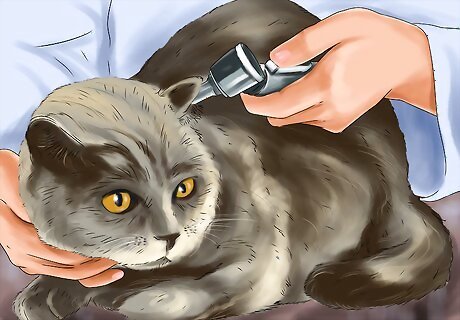
Allow the vet to examine the cat’s ear. The vet will examine the cat with an otoscope for symptoms like head tilting, pain when its ears are touched, and scratches or wounds on its ears and face. They will also closely examine the cat’s ears, looking for discharge and swelling of the ear canal. The vet may sedate the cat to do a thorough ear exam. They may put a special dye into the cat’s ear canal to determine if its eardrum is ruptured. They may also look for tiny air bubbles to appear in the cat’s ear canal when it breathes, which is a sign of a ruptured eardrum.

Let the vet run tests on the cat. The vet may culture your cat's ears to determine if there is an infection or to clear debris. Depending upon your cat's symptoms, it's also possible they may perform X-rays. If needed, you vet may perform CT and MRI scans. These tests will help the vet better identify if the cat has ruptured eardrums.
Treating the Issue
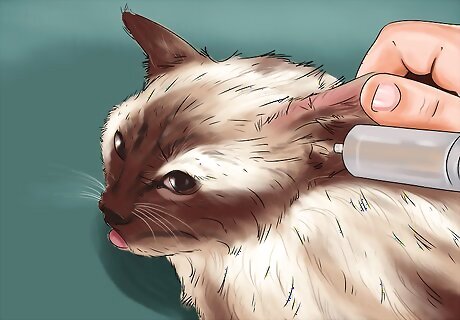
Allow the vet to flush the cat’s ears. In most cases, the vet will flush the cat’s ears to help treat the ruptured eardrums. They will use a sterile flushing solution to try to remove discharge, fluid, or debris in the cat’s eardrums. The cat will be under sedation or anesthesia during the ear flushing.
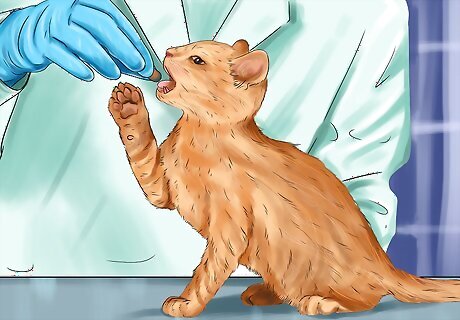
Give the cat antibiotics and medication. The vet may also recommend oral or topical antibiotics or antifungal medication. They will instruct you on the proper dosage of the medication for the cat. You may also refer to how to give a cat medication to help make the process easier. If the cat is a lot of pain or has a lot of swelling, the vet may recommend steroids or non-steroidal anti-inflammatory medications. They will explain the proper dosage for the cat.
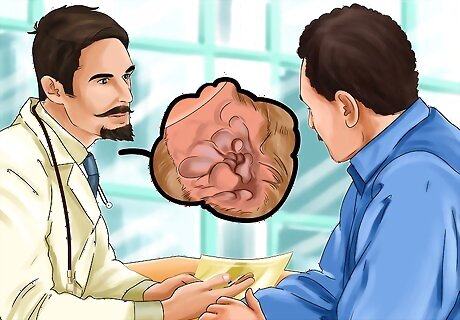
Discuss surgical options with the vet. If the cat’s condition is severe, it may require surgery. The surgery can help to repair the damaged eardrums. The vet will outline the surgical procedure as well as the risks of the procedure. Surgery on the cat can be expensive so speak to the vet about the best course of action before you choose this option.


















Comments
0 comment